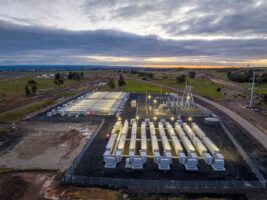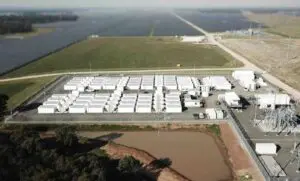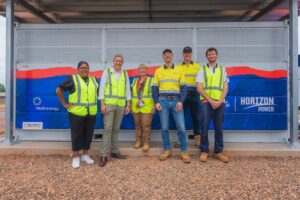Replacing poles and wires with renewables and battery storage on parts of Australia’s electricity network could “save hundreds of millions of dollars” in network costs and deliver more reliable supply, according to energy minister Angus Taylor.
Taylor’s clean energy epiphany – at least for the edge of grid – was delivered as part of Coalition plans to underwrite the establishment of up to 50 “affordable and reliable” renewable microgrids around the country, via a new $50.4 million purpose-built fund.
But they’re not going to just go out and do it. In a statement on Thursday – and just weeks out from a May federal election – Taylor said the Regional and Remote Communities Reliability Fund would investigate whether establishing new microgrids or upgrading microgrids was cost-effective.
Where feasibility studies found microgrids to be economically viable, the statement said, communities could upgrade existing diesel generation or take advantage of local generation and storage opportunities.
Of course, plenty of evidence already exists to show that shifting remote and fringe-of grid communities to, say, solar and battery storage, is a great deal cheaper than any other available alternatives, not to mention better for the environment and easier to manage in an increasingly volatile climate.
In Western Australia, the state government-owned utility Horizon Power has been investigating this very pathway on various parts of its own unwieldy grid for several years, with consistently impressive results.
So impressive, in fact, that the Labor McGowan has now committed to a major grid transformation that will replace 54km of ageing power lines with stand-alone solar and battery systems.
As we reported here earlier this month, site are set to begin any day now on works to prepare for the installation of 13 Micro Power Systems across 14 rural properties (one of those systems will service two properties) in the state’s south.
The stand-alone MPS will use a combination of solar and battery technology, with back-up diesel generation, to provide power for farmers living on the edge of the grid in the Esperance and Condingup regions.
The state’s other government-owned utility, Western Power, is doing a similar thing, but on a much larger scale – fitting 57 regional properties with stand alone solar and battery storage.
A statement from W.A. energy minister Bill Johnston last month said the cost of servicing the 57 SPS (stand-alone power system) units for their entire working life would save Western Power almost $6 million, compared to traditional network refurbishment.
But credit where it’s due; Taylor – who has previously complained that there is already far too much solar on Australia’s networks, and not enough “fair dinkum power” – also hopes the fund will unlock private sector and community investment in “new generation” and storage.
It is also hoped that the new fund it will enable new forms of microgrid “ownership,” taking proposals like the Daintree region project to investment stage – and “guiding” them to additional support, potentially from the Clean Energy Finance Corporation or the Australian Renewable Energy Agency.
The Daintree project has been a pet of the Coalition government since back when Josh Frydenberg was energy minister, during which time an ARENA-backed analysis from Sunverge examined five options to power the World Heritage-listed rainforest region.
These included single and multiple electrical micro-grids with high renewables uptake and a hydrogen micro grid with renewables and bio methane.
“As the cost of providing off-grid electricity continues to fall, in some cases it will be cheaper to provide off-grid supply rather than maintain and replace the long power lines that connect remote customers to the grid,” Taylor said in Thursday’s statement.
“Moving some remote customers to off-grid supply could save hundreds of millions of dollars in network costs and reduce bushfire risks. Microgrids will also deliver more reliable supply to remote communities.”









